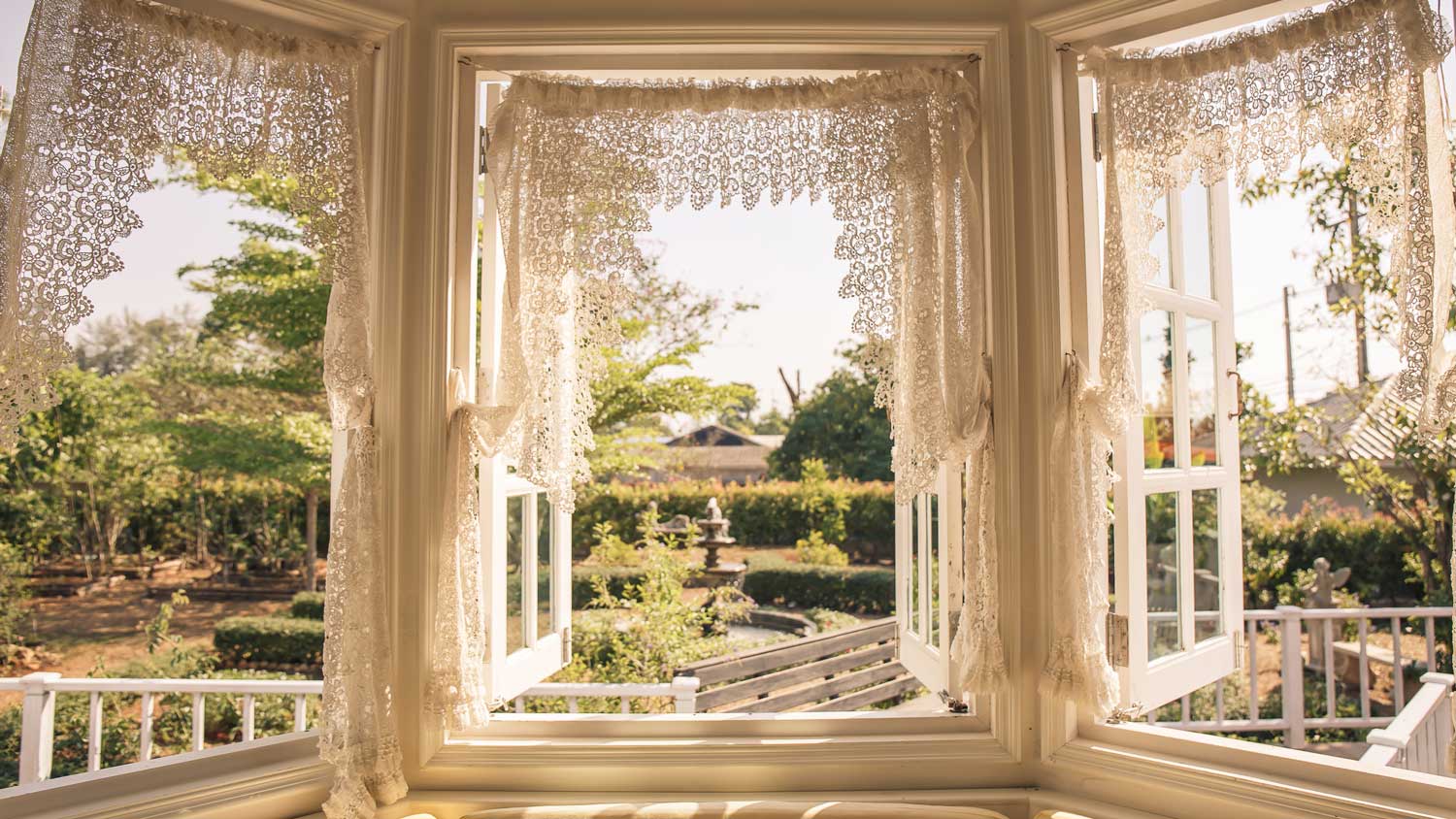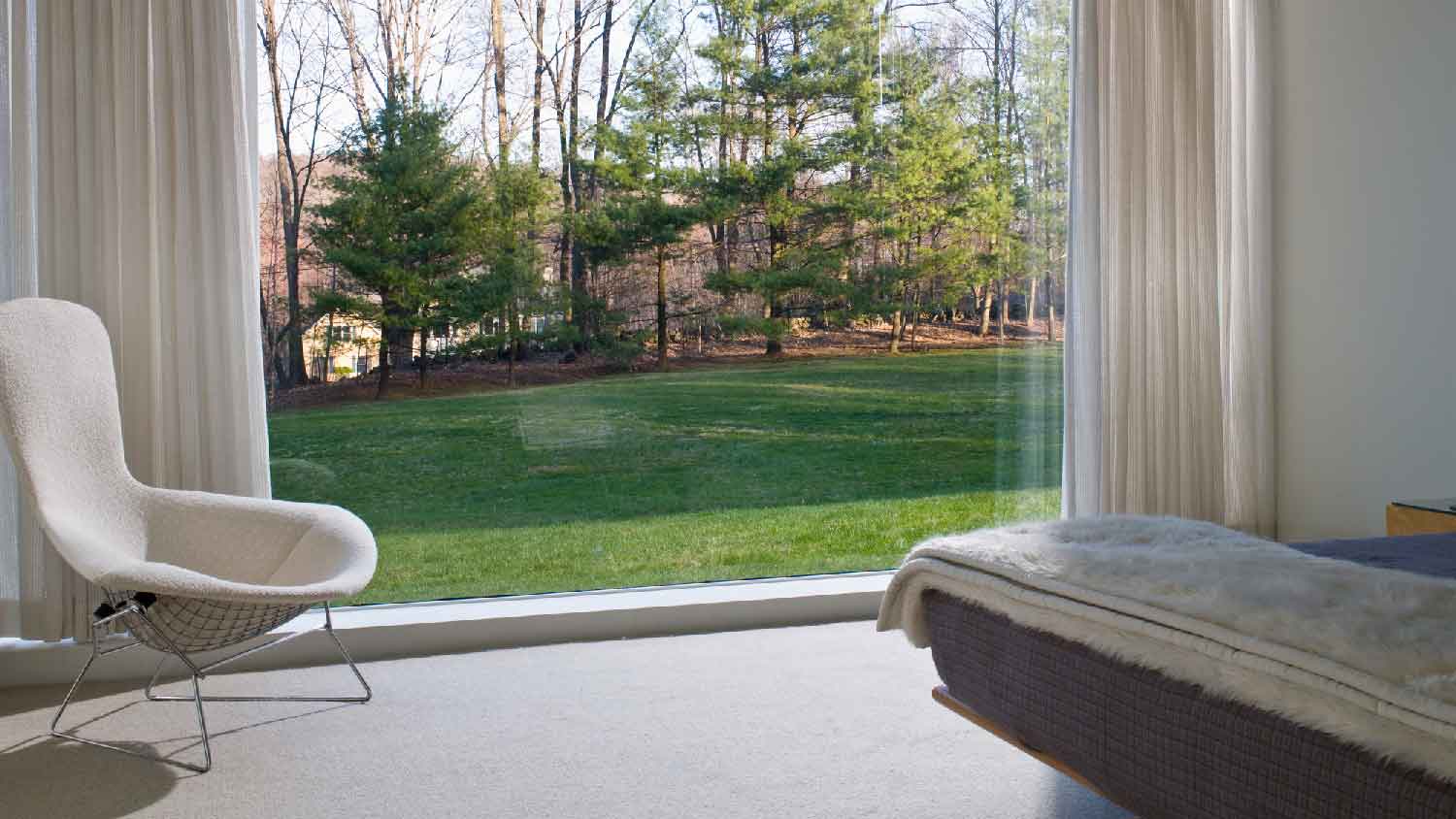
From a small window over the kitchen sink to a grand living room window, picture windows add light and great views. Learn how much picture windows cost.
And no, it’s not because something’s wrong


Wavy glass is a sign that the glass was blown a long time ago, not a mark of quality or a defect.
This style of glass may require special framing.
These windows are less efficient than modern windows, but you can enhance their thermal capacity by adding film, maintaining seals, and having pros keep them pristine.
Wavy glass can be a selling point since it adds architectural charm to a home.
You’ve bought a late Victorian home and are obsessed with the stained glass windows and elaborate, ornate design. But you’ve noticed something peculiar—the window glass is wavy. What gives?
Wavy glass was much more common in windows and other glasswork before the 1900s. Moreover, the older the glasswork is, the more wavy it can be. Originally, glassmakers made windows and other glasswork by blowing through a single tube. Little bubbles (also known as seeds) formed as they did so. Over time, the practice of glassmaking has been refined, so you’ll notice fewer of these seeds in glasswork from the 1800s and next to none in ones from the 1900s on.
While some people believe that the waviness results from the glass warping over time, the real reason for the wavy appearance is the way glass was made when the home was built.
Two types of glass were used in the 19th century: crown glass and cylinder glass.
If you have a circular window in your home, it’s most likely crown glass. French glass blowers perfected this technique during the 1320s when they made these windows in front of a furnace to keep the glass hot and fluid, forming its circular shape by blowing and spinning it. But the popularity of crown glass waned, as it could not be used in most types of windows because of its shape.
Homebuilders began using cylinder glass in windows because it was more versatile than crown glass and could be produced in sheets. While cylinder glass was made with the same blowing and heating processes as crown glass, it was then flattened and smoothed out. So, while cylinder glass is usually less wavy than its crown counterpart, some waves are still visible.
Because wavy glass does not mean the windows are damaged, you can rest easy and leave them as-is. Many homeowners love the charm of original windows in a turn-of-the-century home, and it can be a huge selling point. Also, you may be eligible for Historic Preservation Tax Credits for homeowners who restore and retrofit instead of replacing their windows.

While original windows can look lovely, sometimes they don’t insulate a home like new ones do. The good news: There are several ways you can maintain the efficiency of your original windows without replacing them.
Maintain the seal between the window frame and the glass. If the seal isn’t good, your heat and air conditioning will escape through the gap, leading to higher utility bills.
Apply film: If you want to blot out some sunshine to keep your air conditioner from working overtime, learning how to apply window film will help you keep cool in the summer.
Install curtains over the original windows. Heavier curtains can serve as a barrier between the air inside and outside, regulating your home's temperature more effectively. Look for blackout curtains or energy-efficient curtains to maximize your savings.
Caulk it: Learning how to caulk windows keeps the outside air out so your air conditioner doesn’t have to work overtime.
Hire a pro to evaluate your windows and ensure no damage is letting air through the cracks. And if you’re looking to make changes, they can also suggest kitchen window ideas.
Wavy window glass is not a flaw—instead, it’s one of the ways your historic home tells a story. These windows are unique in a way that is not easily replicated today.
From average costs to expert advice, get all the answers you need to get your job done.

From a small window over the kitchen sink to a grand living room window, picture windows add light and great views. Learn how much picture windows cost.

Restoring old windows is a great way to improve the appearance of your home. Costs vary depending on the age of the windows, the number you are restoring, and the window’s material.

Is it time to upgrade your home’s windows? Learn more about window replacement costs, considering various window sizes, styles, and energy efficiency.

When it comes to vinyl vs. aluminum windows, you should consider price, insulation, and longevity. Learn about other differences and which is best for you.

Do windows with broken seals need to be replaced? We’ll walk you through when to repair broken window seals and when to replace the windows wholesale.

Do you need impact windows to protect your home in the event of a hurricane? Find out how much impact windows cost, including the windows themselves and the labor to install them.